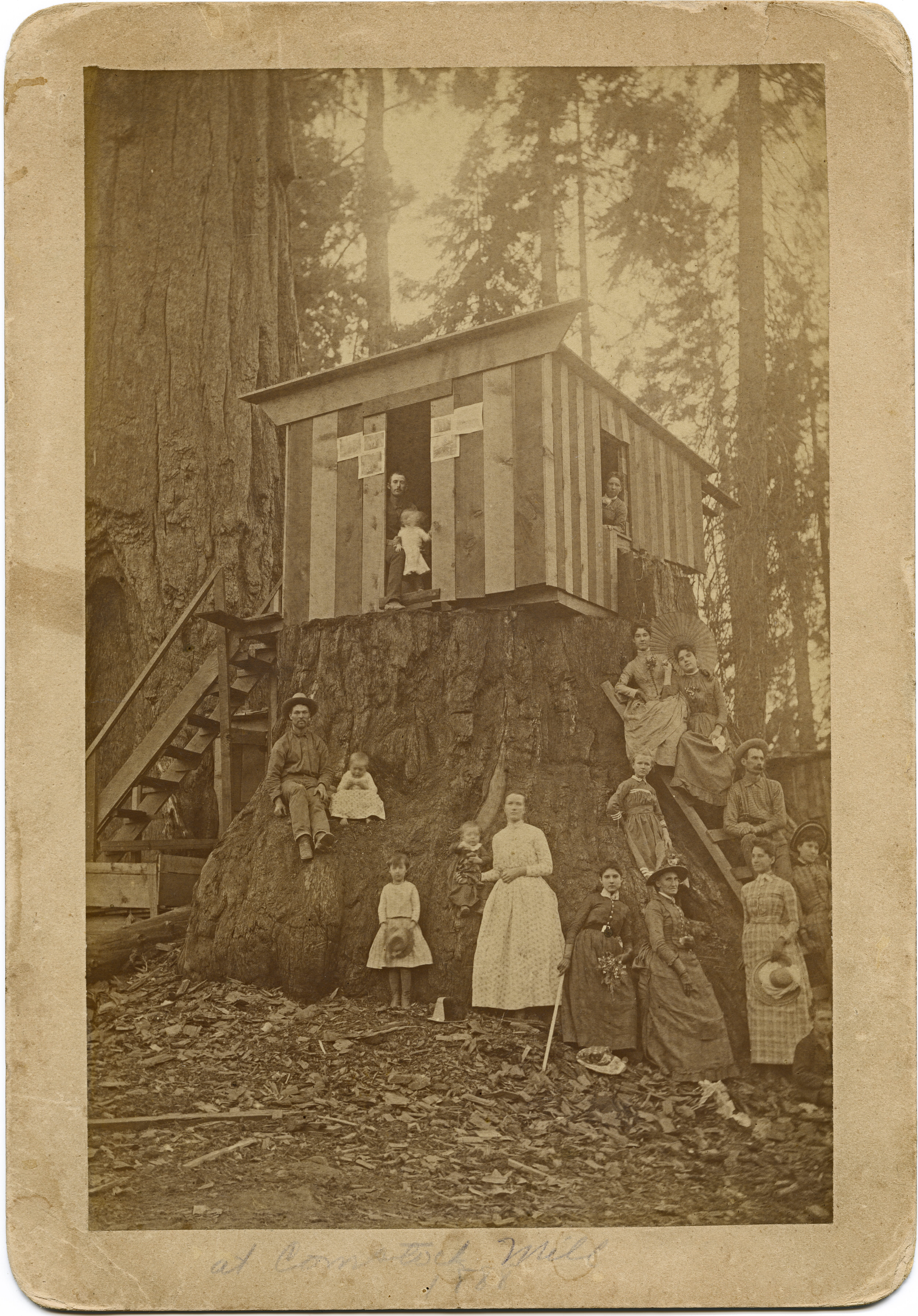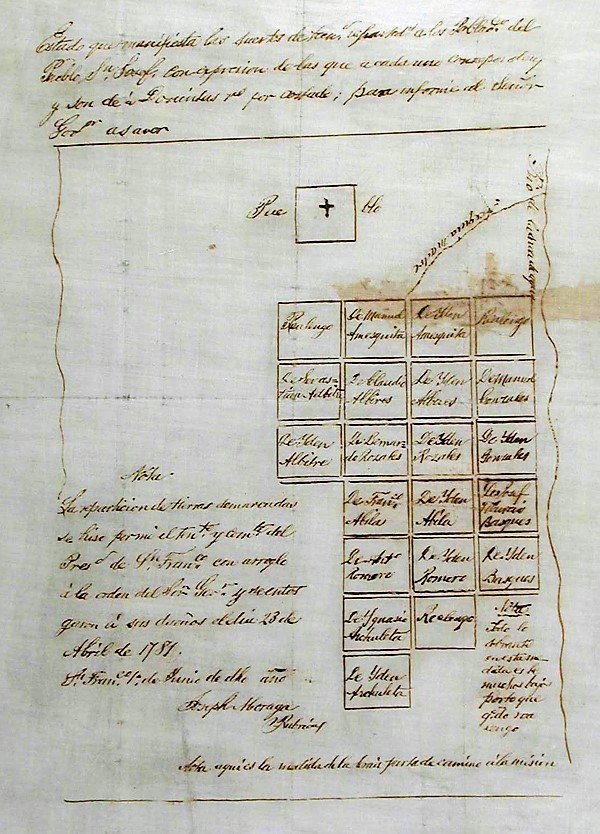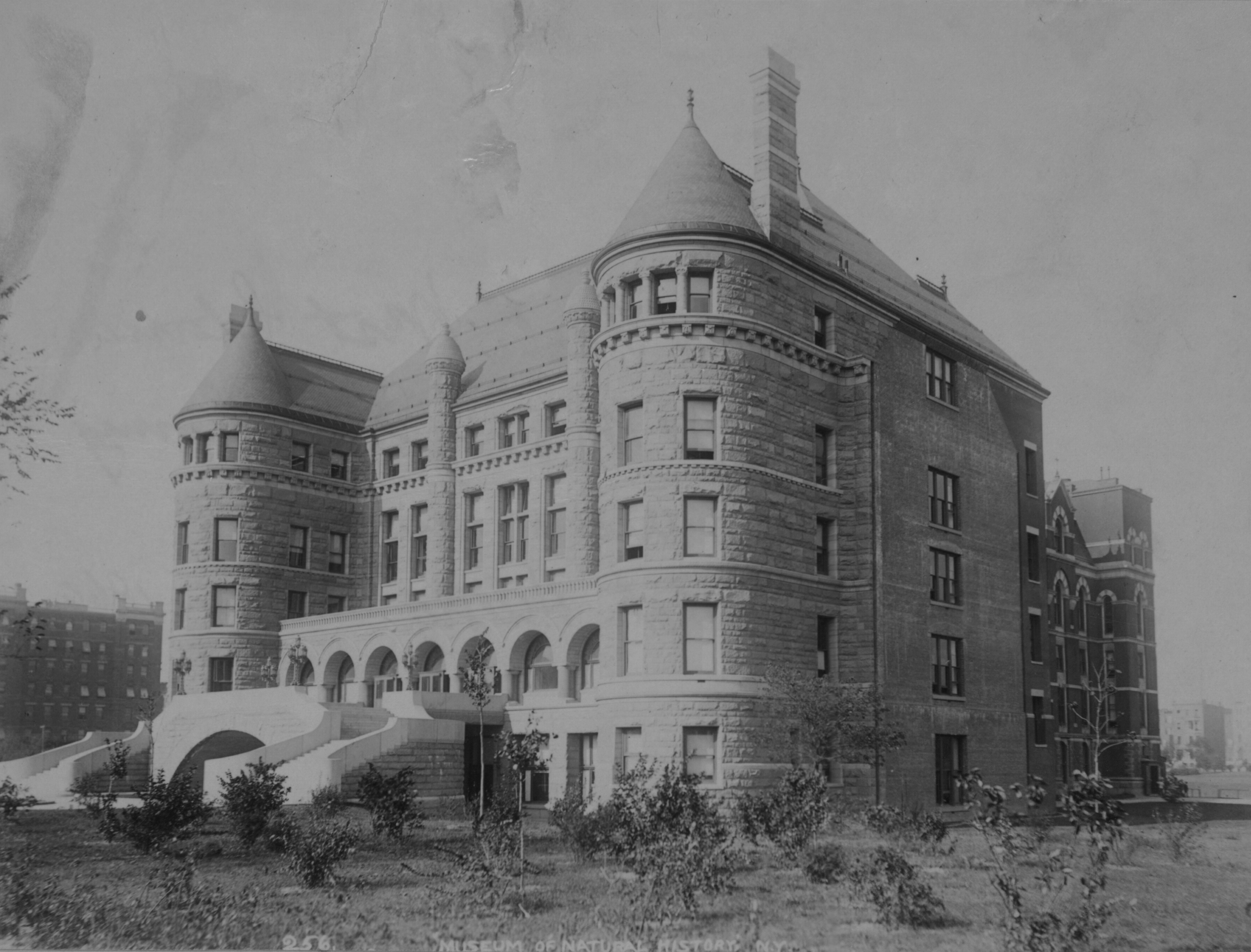|
C.C. Curtis
Charles Clifford Curtis (1862–1956) was a pioneering American photographer who is best remembered for his documentary photography of the logging industry in the Sierra Nevada mountains in the late 19th century. His photographs, which captured the felling of the famous Mark Twain Tree and the General Noble tree, helped to convince the public that these giant sequoias were not a hoax. Curtis was well known for his use of large plate photography, which allowed him to capture portraits of people and gatherings that were dwarfed by the scale of the giant trees. His images of logging crews working in the rugged terrain of Converse Basin are considered some of the most iconic and enduring images of the era. Early life C.C. Curtis was born in Marshalltown, Iowa, on May 28, 1862. He moved to California at the age of 19 and began his photography career as an apprentice in San Francisco. He quickly developed a passion for the craft and began traveling throughout the San Joaquin Valle ... [...More Info...] [...Related Items...] OR: [Wikipedia] [Google] [Baidu] |
Marshalltown, Iowa
Marshalltown is a city in and the county seat of Marshall County, Iowa, United States, located along the Iowa River. It is the seat and most populous settlement of Marshall County and the 16th largest city in Iowa, with a population of 27,591 at the 2020 census. Marshalltown is home to the Iowa Veterans Home and Marshalltown Community College. History Henry Anson was the first European settler in what is now called Marshalltown. In April 1851, Anson found what he described as “the prettiest place in Iowa.” On a high point between the Iowa River and Linn Creek, Anson built a log cabin. A plaque at 112 West Main Street marks the site of the cabin. In 1853 Anson named the town Marshall, after Marshall, Michigan, a former residence of his. The town became Marshalltown in 1862 because another Marshall already existed in Henry County, Iowa (In 1880, Marshall's name changed to Wayland). With the help of Potawatomi chief Johnny Green, Anson persuaded early settlers to stay in ... [...More Info...] [...Related Items...] OR: [Wikipedia] [Google] [Baidu] |
Kaweah Colony
The Kaweah Colony was a utopian socialist community in central California founded in 1886, with a name meaning "here we rest." Located in the Sierra Nevada range, they lived near groves of giant sequoia trees. The colony officially disbanded in 1892. The establishment of Sequoia National Park in 1890 contributed to the colony's demise. Some of their descendants still reside in the area. History Establishment Inspired by the writings of Laurence Gronlund, colony leaders attempted to apply the ideals of scientific socialism. The writings of United States socialist Edward Bellamy also influenced the project. March 9, 1888, the colony was legally established through the ''Deed of Settlement and Bylaws of Kaweah Colony''. This colony based its economy on logging. Membership cost $500 with $100 payable upon application and the remainder in installments of cash or labor. Estimated nationwide membership peaked at 300-500 individuals, many of whom were non-resident supporters. ... [...More Info...] [...Related Items...] OR: [Wikipedia] [Google] [Baidu] |
San Jose, California
San Jose, officially San José (; ; ), is a major city in the U.S. state of California that is the cultural, financial, and political center of Silicon Valley and largest city in Northern California by both population and area. With a 2020 population of 1,013,240, it is the most populous city in both the Bay Area and the San Jose-San Francisco-Oakland Combined Statistical Area, which contain 7.7 million and 9.7 million people respectively, the third-most populous city in California (after Los Angeles and San Diego and ahead of San Francisco), and the tenth-most populous in the United States. Located in the center of the Santa Clara Valley on the southern shore of San Francisco Bay, San Jose covers an area of . San Jose is the county seat of Santa Clara County and the main component of the San Jose–Sunnyvale–Santa Clara Metropolitan Statistical Area, with an estimated population of around two million residents in 2018. San Jose is notable for its innovation, cultural div ... [...More Info...] [...Related Items...] OR: [Wikipedia] [Google] [Baidu] |
Depression Of 1882–1885
The Depression of 1882–1885, or Recession of 1882–1885, was an economic contraction in the United States that lasted from March 1882 to May 1885, according to the National Bureau of Economic Research. Lasting 38 months, it was the third-longest recession in the NBER's chronology of business cycles since 1854. Only the Great Depression (1929-1941) and the Long Depression (1873–1879) were longer. History Origin The Depression of 1882–1885 was not inaugurated by financial disaster or mass panic, but was rather an economic downturn that came about through a protracted and gradual process. The downturn was preceded by a period of prosperity over the years 1879 to 1882, a growth powered by expansion of the American railroad industry and the opening of economic opportunities associated with the development of the transportation system.Alan L. Sorkin, "Depression of 1882-1885," in David Glasner (ed.), ''Business Cycles and Depressions: An Encyclopedia.'' Abingdon, England: Rou ... [...More Info...] [...Related Items...] OR: [Wikipedia] [Google] [Baidu] |
World's Columbian Exposition
The World's Columbian Exposition (also known as the Chicago World's Fair) was a world's fair held in Chicago in 1893 to celebrate the 400th anniversary of Christopher Columbus's arrival in the New World in 1492. The centerpiece of the Fair, held in Jackson Park, was a large water pool representing the voyage Columbus took to the New World. Chicago had won the right to host the fair over several other cities, including New York City New York, often called New York City or NYC, is the most populous city in the United States. With a 2020 population of 8,804,190 distributed over , New York City is also the most densely populated major city in the U ..., Washington, D.C., and St. Louis. The exposition was an influential social and cultural event and had a profound effect on American Architecture of the United States, architecture, the arts, American industrial optimism, and Chicago's image. The layout of the Chicago Columbian Exposition was, in lar ... [...More Info...] [...Related Items...] OR: [Wikipedia] [Google] [Baidu] |
American Museum Of Natural History
The American Museum of Natural History (abbreviated as AMNH) is a natural history museum on the Upper West Side of Manhattan in New York City. In Theodore Roosevelt Park, across the street from Central Park, the museum complex comprises 26 interconnected buildings housing 45 permanent exhibition halls, in addition to a planetarium and a library. The museum collections contain over 34 million specimens of plants, animals, fossils, minerals, rocks, meteorites, human remains, and human cultural artifacts, as well as specialized collections for frozen tissue and genomic and astrophysical data, of which only a small fraction can be displayed at any given time. The museum occupies more than . AMNH has a full-time scientific staff of 225, sponsors over 120 special field expeditions each year, and averages about five million visits annually. The AMNH is a private 501(c)(3) organization. Its mission statement is: "To discover, interpret, and disseminate—through scientific research ... [...More Info...] [...Related Items...] OR: [Wikipedia] [Google] [Baidu] |
Hume-Bennett Lumber Company
The Hume-Bennett Lumber Company was a logging operation in the Sequoia National Forest in the late 19th and early 20th centuries. The company and its predecessors were known for building the world's longest log flume and the first multiple-arch hydroelectric dam. However, the company also engaged in destructive clearcutting logging practices, cutting down 8,000 giant sequoias in Converse Basin in a decade-long event that has been described as "the greatest orgy of destructive lumbering in the history of the world." Public opposition of the company’s actions helped mobilize support for the early conservation movement, leading to the creation of Yosemite, Sequoia, and General Grant National Parks in the early 1880s. By the 1950s, almost all surviving sequoia groves were under public protection. Despite its efforts, the company never turned a profit and closed in 1924. In 1935, the land was purchased by the federal government and became part of the Sequoia National Forest. ... [...More Info...] [...Related Items...] OR: [Wikipedia] [Google] [Baidu] |
General Grant Grove
General Grant Grove, a section of the greater Kings Canyon National Park, was established by the U.S. Congress in 1890 and is located in Fresno County, California. The primary attraction of General Grant Grove is the giant sequoia trees that populate the grove. General Grant Grove's most well-known tree is called General Grant, which is tall and the third-largest known tree in the world.Traditionally, the size of a sequoia has been measured by calculating the volume of the tree's trunk. Using this metric, General Grant is the second-largest known tree in the world, while the President tree is the third-largest. However, a 2011–12 study of the President found that, if the volume of a tree's branches is taken into account, the President is larger than General Grant. The General Grant tree is over 1,500 years old and is known as the United States' national Christmas tree. General Grant Grove consists of and is geographically isolated from the rest of Kings Canyon National Park. ... [...More Info...] [...Related Items...] OR: [Wikipedia] [Google] [Baidu] |
Kings Canyon National Park
Kings Canyon National Park is an American national park in the southern Sierra Nevada, in Fresno and Tulare Counties, California. Originally established in 1890 as General Grant National Park, the park was greatly expanded and renamed to Kings Canyon National Park on March 4, 1940. The park's namesake, Kings Canyon, is a rugged glacier-carved valley more than a mile (1,600 m) deep. Other natural features include multiple peaks, high mountain meadows, swift-flowing rivers, and some of the world's largest stands of giant sequoia trees. Kings Canyon is north of and contiguous with Sequoia National Park, and both parks are jointly administered by the National Park Service as the Sequoia and Kings Canyon National Parks. The majority of the park, drained by the Middle and South Forks of the Kings River and many smaller streams, is designated wilderness. Tourist facilities are concentrated in two areas: Grant Grove, home to General Grant (the second largest tree in the wor ... [...More Info...] [...Related Items...] OR: [Wikipedia] [Google] [Baidu] |
General Grant (tree)
The General Grant tree is the largest giant sequoia (''Sequoiadendron giganteum'') in the General Grant Grove section of Kings Canyon National Park in California and the second largest giant sequoia tree in the world. Once thought to be well over 2,000 years old, recent estimates suggest the General Grant tree is closer to 1,650 years old. The tree also features the third largest footprint of any living giant sequoia, measuring in circumference at ground level. History The tree was named in 1867 after Ulysses S. Grant, Union Army general and the 18th President of the United States The president of the United States (POTUS) is the head of state and head of government of the United States of America. The president directs the Federal government of the United States#Executive branch, executive branch of the Federal gove ... (1869–1877). President Calvin Coolidge proclaimed it the "Nation's Christmas Tree" on April 28, 1926. Due in large part to its huge base, the G ... [...More Info...] [...Related Items...] OR: [Wikipedia] [Google] [Baidu] |
Big Stump Grove
Big Stump Grove is a giant sequoia grove located at the southwest entrance of Kings Canyon National Park in the Sierra Nevada of California. It is one of a group of eight close but narrowly separated Giant Sequoia groves situated in Giant Sequoia National Monument and Kings Canyon National Park. Overview The grove derives its name from ''Old Adam'', sometimes also referred to as the ''Burnt Monarch''. It is a large standing sequoia snag, which had died prior to logging in that area. Noteworthy trees Some trees found in the grove that are worthy of special note include: * Mark Twain Stump: the stump of what was once one of the largest giant sequoias in the world. Felled in 1891 so that sections of the trunk could be displayed in the natural history museums of New York and London. The remainder of the tree was cut up for grape stakes and fence posts. *The Sawed Tree: a giant sequoia that bears the scars of deep cuts from a crosscut saw made sometime during the late 19th century, ... [...More Info...] [...Related Items...] OR: [Wikipedia] [Google] [Baidu] |








